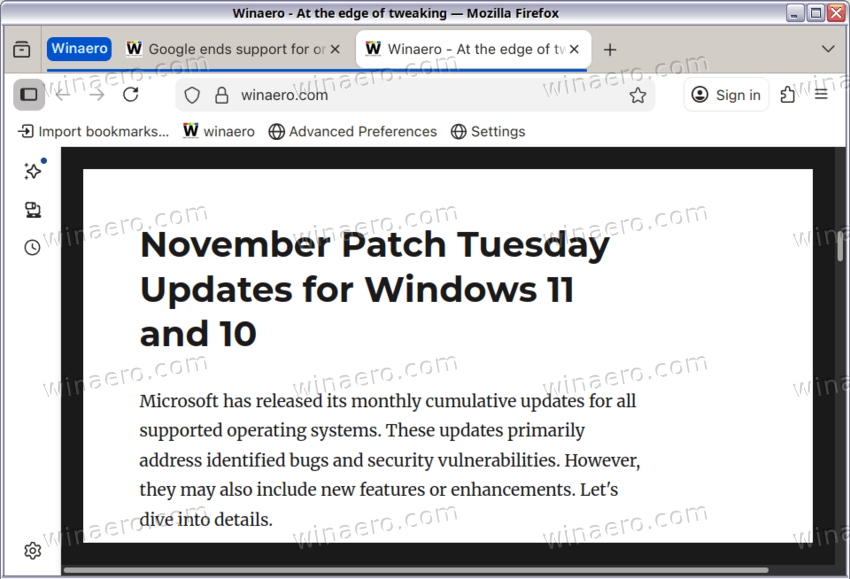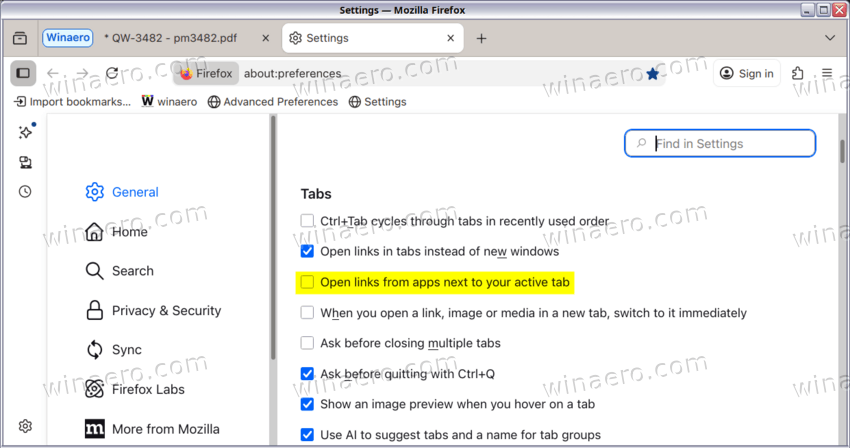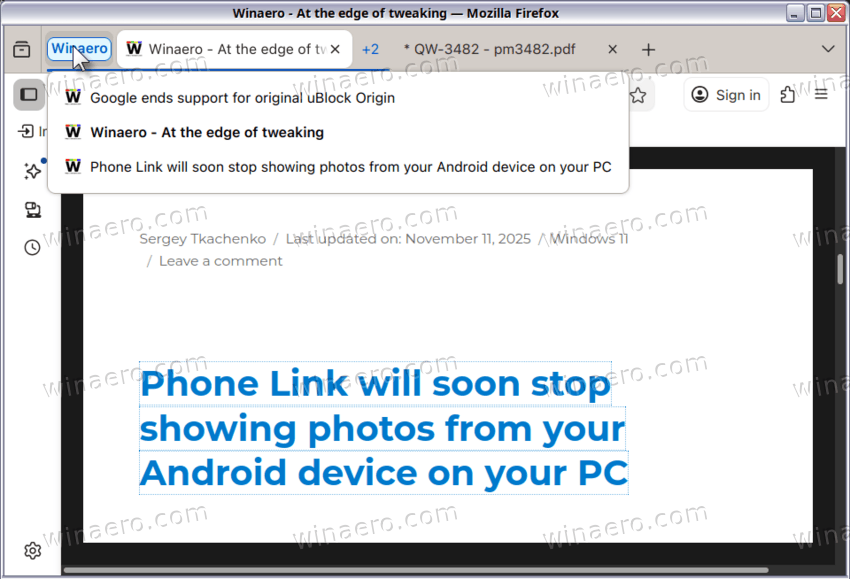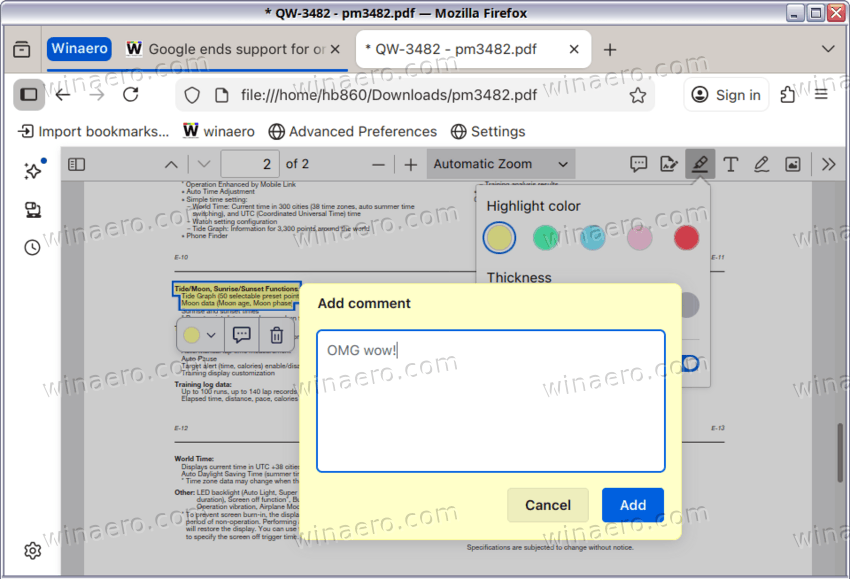Firefox 145 is now available, accompanied by updates to the long-term support branches 140.5.0 and 115.30.0. Firefox 146 has entered beta testing and is scheduled for release on December 9. Firefox 145 introduces several updates and security improvements. Interface refinements include rounded UI elements, enhanced tab management, and a new PDF viewer with annotation capabilities. Password management now functions directly from the sidebar, and users can select new background images for the new tab page.
Advertisеment
What's new in Firefox 145
End of Support for 32-bit Linux
Firefox 145 discontinues support for 32-bit Linux systems. Maintenance on these platforms has become increasingly complex and unreliable. Most Linux distributions have already ended 32-bit builds. Users should migrate to 64-bit operating systems. Those unable to upgrade immediately may continue using the Firefox 140 ESR branch, which will receive security updates until at least September 2026.
User Interface Improvements
Border Refinements
Firefox 145 introduces improved rounding for buttons, tabs, the address bar, and input fields.
Tab Management Enhancements
A new setting allows tabs opened from external applications to appear next to the currently active tab instead of at the end of the tab list.

Hovering over a collapsed tab group now displays a list of its tabs, enabling quick access without expanding the group.
Productivity and Usability Features
PDF Viewer Upgrades
The built-in PDF viewer now supports adding, editing, and deleting comments and annotations. A dedicated sidebar facilitates navigation through existing comments, and users can assign highlight colors when creating new ones.

Password Management
Users can now manage saved passwords directly from the sidebar without opening the password manager in a separate window or tab.
New Tab Customization
A new set of background images is available for the new tab page, with options for both light and dark modes.
Web Standards and Developer Tools
JavaScript and API Updates
Firefox 145 implements the Atomics.waitAsync() method, which offers an asynchronous alternative to Atomics.wait() by returning a Promise. The ToggleEvent API now includes a source property that identifies the element triggering the event.
CSS Enhancements
The browser now supports the text-autospace CSS property, which adjusts spacing between characters from different writing systems. Additionally, the font-family property includes the “math” keyword for accurate rendering of mathematical expressions.
HTTP Security Headers
Support has been added for the Integrity-Policy and Integrity-Policy-Report-Only HTTP headers to verify the integrity of loaded scripts.
Privacy and Security
Enhanced Fingerprinting Protection
Fingerprinting Protection, active in Enhanced Tracking Protection Strict mode and private browsing, now reduces the effectiveness of fingerprinting techniques by nearly 50%. The update returns constant values for identifying parameters, restricts access to hardware details such as touchpad capabilities and processor core count, injects random noise into canvas-generated images, and disables rendering with non-standard locally installed fonts.
Bounce Tracking Protection
Bounce Tracking Protection is now enabled by default in Strict mode. It identifies redirect-based tracking behavior and clears associated cookies and local data using heuristics rather than predefined tracker lists.
Media and Performance
Matroska Container Support
Firefox 145 adds support for Matroska containers using AVC, HEVC, VP8, VP9, AV1, AAC, Opus, and Vorbis codecs.
Machine Translation Improvements
The built-in translation system now handles languages with differing character directions more effectively. Locally installed translation models use the Zstandard compression algorithm to reduce download size and disk usage.
Platform-Specific Updates
Windows
The Firefox shortcut on Windows now launches a dedicated mini-application that either starts Firefox or initiates installation if the browser is not present.
macOS
Apple Silicon devices running macOS 26 now support the WebGPU API.
Android
Firefox for Android now requires TLS certificates to appear in public Certificate Transparency logs. The CRLite mechanism accelerates certificate revocation checks using a local database synchronized with Mozilla’s servers. Support for the post-quantum hybrid key exchange algorithm “mlkem768x25519” has been added for TLS 1.3 and HTTP/3. The QUIC and HTTP/3 network stack components have been replaced with a higher-performance Rust-based implementation.
Extension Experience
In configurations without add-ons, clicking the add-on access panel button now provides a brief explanation of add-on benefits and a link to the add-on catalog.
Security Fixes
Firefox 145 addresses 19 security vulnerabilities. Ten of these stem from memory management issues, including buffer overflows and use-after-free errors, which could enable malicious code execution via specially crafted web pages.
Download Firefox 145
- On Windows, if you have Firefox installed, then open the browser menu and select “About Firefox.” This will install the latest Firefox version.
- Alternatively, you may download the installer directly from the official release directory: https://releases.mozilla.org/pub/firefox/releases/145.0/. This page provides platform-specific builds organized into subdirectories by operating system, architecture, and interface language. Full offline installer packages are available for all supported configurations.
- Linux users are advised to install or update Firefox through their distribution’s package manager. For example, on Ubuntu or Linux Mint with the official
mozillateamPPA enabled, execute the following command in a terminal with appropriate privileges:
apt update && apt install firefoxThe official release notes for Firefox 144 are available at: https://www.mozilla.org/en-US/firefox/145.0/releasenotes/.
Support us
Winaero greatly relies on your support. You can help the site keep bringing you interesting and useful content and software by using these options:

Once again, I am requesting the option to place tags at the bottom of the window.
And of course, it must be an option, because others like them on the top. Surely Mozilla understands that different people like different things, and that having options will attract people back again to Firefox.